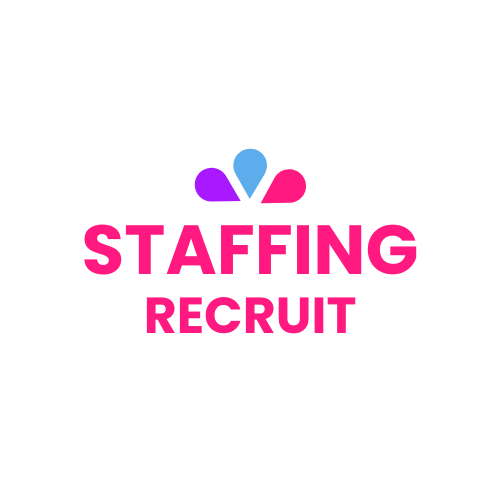The healthcare industry is currently facing unprecedented challenges in securing top-tier talent. Several factors such as aging populations, increased healthcare demands, and a shrinking workforce have created intense competition for skilled care providers.
Healthcare organisations now operate in a candidate-driven market where talented professionals can choose from multiple opportunities. This shift requires a strategic approach to talent acquisition and retention.
Key recruitment challenges include:
- Limited pool of qualified candidates
- Rising salary expectations
- Work-life balance demands
- Competition from both traditional and emerging healthcare providers
In this competitive landscape, having a strong employer brand has become crucial. Organisations need to highlight what makes them unique and provide compelling reasons for top talent to join and remain with their institution.
Successful healthcare employers are adopting innovative strategies to stand out:
- Building authentic employer brands
- Creating supportive work environments
- Offering comprehensive benefits packages
- Developing clear career advancement paths
- Embracing flexibility and work-life integration
Understanding the Competitive Landscape
The healthcare talent market is under immense pressure, with demand far exceeding supply. Recent data shows that there is expected to be a shortage of 122,000 physicians by 2032 and over 1 million nurses by 2030.
Factors Contributing to the Talent Shortage
Several key factors are driving this shortage of healthcare professionals:
- Aging healthcare workforce reaching retirement
- Growing healthcare needs of an aging population
- Limited capacity in medical education programs
- Burnout-related career changes
- Geographic maldistribution of healthcare professionals
Differentiating Strategies for Healthcare Organisations
In order to stand out in this competitive landscape, healthcare organisations need to find ways to differentiate themselves. This can be done through:
- Innovative recruitment approaches
- Strategic compensation packages
- Enhanced workplace culture
- Professional development opportunities
Analysing Competitor Strategies
To gain a better understanding of the competition, organisations should analyse the strategies used by their rivals. This can be achieved by:
- Monitoring job postings and benefits offerings
- Tracking employee reviews on platforms like Glassdoor
- Studying successful retention programs
- Identifying unique value propositions
By gaining insights into market dynamics, healthcare organisations can create targeted strategies that address specific challenges and attract qualified candidates in this highly competitive environment.
1. Enhancing Your Employer Brand
Your employer brand represents your organisation’s reputation as a workplace and shapes how potential candidates perceive your healthcare facility. A strong employer brand directly influences your ability to attract high-caliber care providers and reduces recruitment costs by up to 50%.
Key Components of an Effective Employer Brand:
- Authentic Value Proposition: Define what makes your healthcare organisation unique – specialised medical programs, cutting-edge technology, or innovative patient care approaches
- Cultural Identity: Showcase your workplace atmosphere, team dynamics, and organisational values
- Career Development: Highlight advancement opportunities, mentorship programs, and professional growth initiatives
Creating Distinctive Differentiators:
- Implement specialised training programs
- Offer unique work-life balance benefits
- Develop partnerships with prestigious medical institutions
- Provide access to advanced medical technologies
- Create innovative patient care models
Strategic Brand Communication:
Your recruitment messaging should reflect your employer brand across all touchpoints:
- Job Descriptions: Craft compelling narratives that showcase your workplace culture
- Career Website: Share employee testimonials and day-in-the-life content
- Interview Process: Train hiring managers to effectively communicate your brand values
- Social Media: Share authentic stories highlighting workplace achievements and team celebrations
A healthcare organisation with a well-defined employer brand attracts 3.5 times more qualified applicants per vacancy. Your brand messaging should consistently reflect your organisation’s mission, values, and commitment to excellence in patient care while demonstrating genuine appreciation for healthcare professionals.
2. Understanding Candidate Motivations and Tailoring Your Approach
Successful recruitment strategies in healthcare require a deep understanding of what drives top-tier care providers. Each candidate brings unique skills, experiences, and career aspirations that shape their job search decisions.
Key Motivators for Healthcare Professionals:
- Work-life balance preferences
- Professional development opportunities
- Specialised practice interests
- Geographic location preferences
- Leadership advancement potential
- Research and academic pursuits
A personalised recruitment approach starts with comprehensive skills assessment. Organisations must look beyond technical qualifications to understand:
- Previous work environments
- Patient population experience
- Technology proficiency
- Interpersonal abilities
- Cultural competencies
Creating Targeted Recruitment Strategies:
- Conduct thorough candidate researchReview professional profiles
- Analyse practice history
- Identify special interests
- Customise communication approachesHighlight relevant growth opportunities
- Address specific career goals
- Share aligned organisational values
- Design role-specific presentationsShowcase relevant facilities
- Demonstrate technology capabilities
- Outline specialty-focused resources
Healthcare organisations that invest time in understanding candidate preferences position themselves to make compelling offers. This targeted approach helps match the right talent with appropriate opportunities, increasing acceptance rates and long-term retention.
A skills-based recruitment strategy enables organisations to identify candidates whose capabilities align with specific roles. This alignment creates natural pathways for professional growth and ensures both parties benefit from the employment relationship.
3. Creating a Positive Work Environment That Attracts Top Talent
A positive workplace culture acts as a powerful talent magnet. Organisations that prioritise employee well-being and satisfaction naturally draw top-tier care providers to their doors.
Key Elements of a Positive Work Environment:
1. Flexible Scheduling Options
- Remote work possibilities where applicable
- Alternative shift patterns
- Self-scheduling systems
- Work-life balance initiatives
2. Fostering Belonging
- Regular team-building activities
- Mentorship programs
- Employee resource groups
- Open-door communication policies
3. Professional Development Pathways
- Clear career progression frameworks
- Skill development workshops
- Leadership training programs
- Cross-functional learning opportunities
Healthcare organisations can strengthen their workplace culture through dedicated employee engagement initiatives. Regular pulse surveys help identify areas for improvement, while recognition programs celebrate individual and team achievements.
Growth opportunities serve as powerful retention tools. Organisations should create personalised development plans that align with each provider’s career aspirations. This might include:
- Specialised certification support
- Research participation opportunities
- Teaching and mentoring roles
- Advanced leadership positions
A positive work environment extends beyond traditional benefits. Creating spaces for collaboration, providing state-of-the-art equipment, and implementing wellness programs demonstrate an organisation’s commitment to their care providers’ success and satisfaction.
Healthcare organisations that consistently invest in workplace culture experience higher retention rates and become known as employers of choice in their communities. This reputation naturally attracts high-caliber candidates seeking long-term career homes. However, retaining top talent in a competitive job market can be challenging. Implementing employee retention strategies similar to those used in other sectors, such as flexible scheduling and professional development pathways, can significantly improve retention rates.
4. Comprehensive Onboarding Process for Long-Term Success
A structured onboarding program serves as the foundation for long-term employee success and retention. Research shows that healthcare providers who experience comprehensive onboarding are 58% more likely to remain with the organisation beyond three years.
Key Components of Effective Healthcare Onboarding
1. Pre-arrival Communication
- Welcome package with essential documentation
- Department-specific orientation materials
- Technology access setup
- Mentor assignment
2. First 30 Days
- Clinical systems training
- EMR certification
- Department protocols review
- Shadow experienced providers
3. 60-90 Day Integration
- Regular check-ins with leadership
- Peer feedback sessions
- Performance expectations alignment
- Professional development planning
Best Practices for Provider Onboarding
1. Phased Learning Approach
- Break down complex information
- Allow time for skill mastery
- Provide structured feedback loops
2. Cultural Integration
- Team-building activities
- Department meet-and-greets
- Cross-functional collaboration opportunities
3. Support System Development
- Assign peer mentors
- Create provider support groups
- Schedule regular leadership touchpoints
Healthcare organisations implementing these structured onboarding elements report a 25% increase in new hire retention rates. The investment in comprehensive onboarding programs yields significant returns through improved provider satisfaction, enhanced patient care quality, and reduced turnover costs.
5. Attractive Total Rewards Package and DEI Initiatives to Stand Out as an Employer of Choice
A competitive total rewards strategy serves as a powerful magnet for top healthcare talent. The most effective packages combine:
- Base Compensation
- Market-leading salary structures
- Performance-based bonuses
- Sign-on incentives
- Retention rewards
- Comprehensive Benefits
- Flexible healthcare coverage
- Student loan repayment assistance
- Enhanced retirement plans
- Paid time off and sabbatical programs
Organisations can differentiate themselves by offering personalised rewards packages. A “cafeteria-style” benefits system allows care providers to select options aligned with their individual needs and life stages.
Creating an Inclusive Healthcare Environment
DEI initiatives play a vital role in attracting diverse talent and fostering workplace belonging. Successful strategies include:
- Establishing employee resource groups for underrepresented healthcare professionals
- Implementing bias training specific to medical settings
- Creating mentorship programs pairing experienced providers with new talent
- Developing clear career advancement pathways for all employees
Healthcare organisations should track key metrics:
- Diversity representation across all levels
- Pay equity analyses
- Employee engagement scores by demographic
- Retention rates among different groups
A robust DEI framework requires dedicated resources and leadership commitment. Organisations can demonstrate this through:
- Appointing DEI officers with healthcare expertise
- Allocating budget for inclusive initiatives
- Regular communication of progress and goals
- Integration of DEI objectives into strategic planning
These combined efforts create a workplace where care providers feel valued, supported, and empowered to deliver exceptional patient care.
6. Using Social Media for Successful Recruitment
Social media has transformed healthcare recruitment, providing powerful tools to attract and engage top talent. LinkedIn is particularly important for healthcare organisations to establish their employer brand and connect with qualified candidates.
Creating Strategic Content for LinkedIn:
- Share behind-the-scenes glimpses of your workplace culture
- Highlight employee success stories and career growth journeys
- Post educational content about healthcare innovations and industry trends
- Showcase community involvement and organisational achievements
Implementing Effective Job Posting Strategies:
- Use targeted keywords relevant to specific healthcare roles
- Include compelling visuals or videos to increase engagement
- Write clear, concise job descriptions with specific requirements
- Highlight unique benefits and growth opportunities
Building Meaningful Connections:
- Engage with industry-specific groups and discussions
- Respond promptly to comments and messages
- Share thought leadership content from your healthcare professionals
- Create employee advocacy programs to expand reach
Exploring Advanced Social Media Tactics:
- Utilise LinkedIn’s targeting features for sponsored content
- Implement hashtag strategies to increase post visibility
- Create dedicated career pages on multiple platforms
- Share live video content of workplace events and team activities
A strong social media presence requires regular monitoring and interaction. Organisations should assign dedicated team members to manage social media recruitment efforts and track metrics such as engagement rates, application rates, and hire quality through social channels.
Regular analysis of social media recruitment data helps refine strategies and improve candidate targeting. Healthcare organisations can adjust their approach based on platform-specific analytics and candidate feedback.
Conclusion
The healthcare hiring landscape continues to evolve at a rapid pace. Organisations that prioritise strategic recruitment approaches gain a significant competitive advantage in attracting top-tier care providers. A holistic recruitment strategy – combining employer branding, candidate-centric approaches, positive work environments, comprehensive onboarding, and compelling total rewards packages – creates a powerful foundation for talent acquisition success.
The future of healthcare recruitment demands adaptability and innovation. Organisations must:
- Stay attuned to emerging workforce expectations
- Embrace technological advancements in recruitment
- Maintain authentic employer branding
- Foster inclusive workplace cultures
- Develop sustainable talent pipelines
Success in attracting top-tier care providers hinges on an organisation’s ability to differentiate itself while delivering genuine value to potential candidates. By implementing the strategies outlined in this guide, healthcare organisations can position themselves as employers of choice in an increasingly competitive market.
The path forward: Focus on building lasting relationships with candidates, nurturing your employer brand, and creating an environment where exceptional care providers can thrive professionally and personally.

